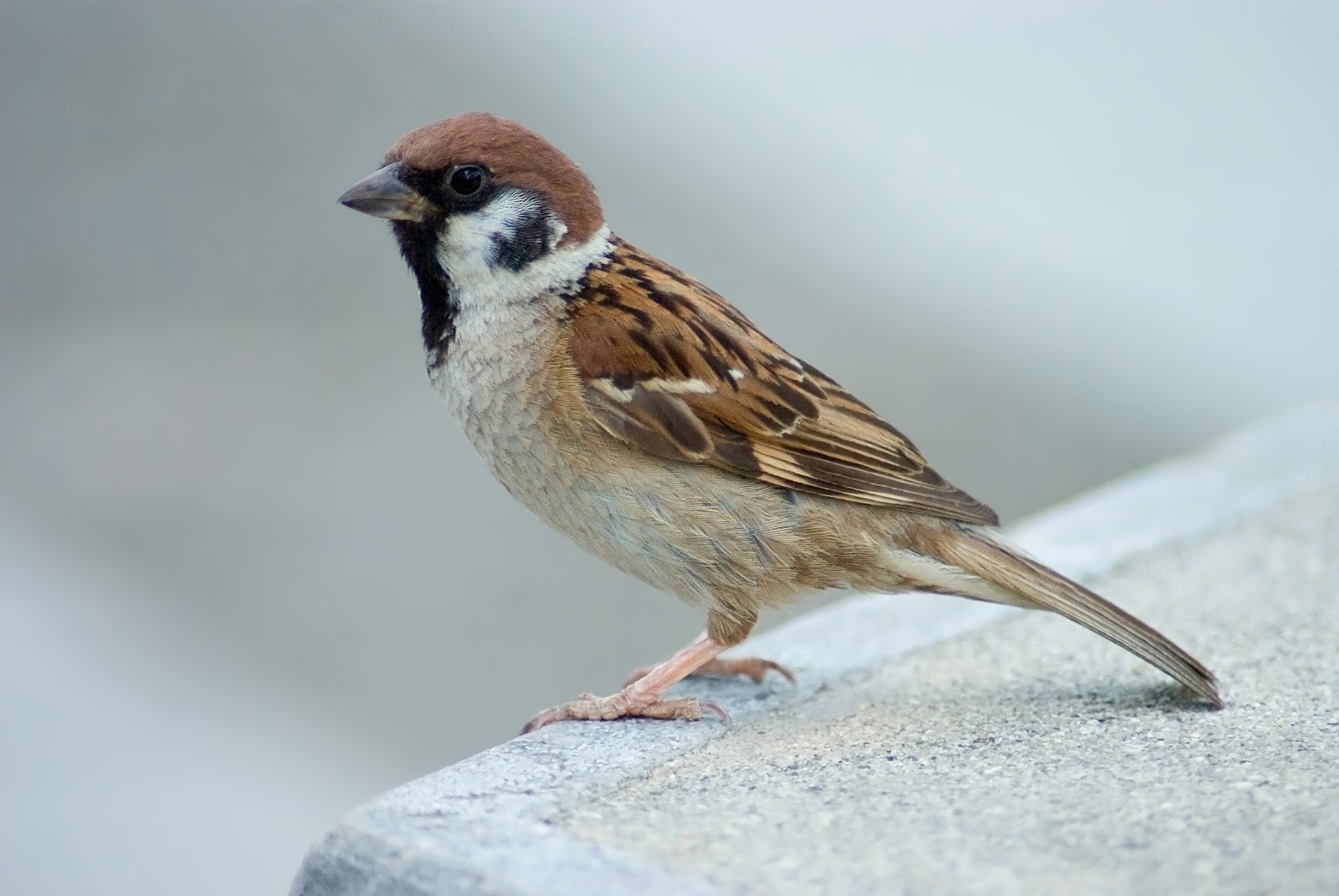This is an entertaining book. Really. The author, J.
Denis Summers-Smith, has spent 50 years studying sparrows. You heard me. He has
been studying *sparrows* for 50 years. Apparently, they even call him Sparrow
Man. The man has visited far-away places such as Siberia, Afghanistan and Iran
with the sole purpose of observing sparrows! This is his fourth book on this
rather obscure subject.
"The Tree Sparrow" is essentially a mini-encyclopaedia about the Tree Sparrow, one of the 25 species of sparrows. It's not suited for the general reader, being filled with detailed and somewhat technical information. Rather, it's a reference work for ornithologists and (perhaps) advanced bird-watchers.
Still, I found the book interesting, in a strange kind of way. I'm one of those "bad bird-watchers", after all. Here in Sweden, telling the difference between House Sparrows and Tree Sparrows is considered common knowledge. It's something every child learns already in preschool, or even earlier. At least in the suburbs of Stockholm, both sparrows can be seen, often in mixed flocks. Tree Sparrows are so small that I often fear accidentally stepping on them and crushing them whenever I take a walk through suburbia! Confusingly, the Tree Sparrow is called "Willow Finch" in Swedish.
From Sparrow Man's book, I learned that the Tree Sparrow is a colonial and social species. Unusually, both sexes look almost identical. To get a competitive advantage over other small passerines, the Tree Sparrows choose and defend a potential nesting site long before the actual breeding season. Another strategy is to attack and take over completed nests of other songbirds, destroying their eggs in the process! Great Tits and Blue Tits can be attacked in this way. Even in mixed species flocks, Tree Sparrows aren't the subordinate species, but fall somewhere in the middle of the dominance hierarchy. (I had expected these micro birds to be the pushovers of the bird world!) Of course, Tree Sparrows might get attacked by larger birds.
The Tree Sparrow's main competitor is the House Sparrow, a similar but sturdier species. House Sparrows are dominant over Tree Sparrows. For instance, House Sparrows always take higher-placed nest boxes, leaving lower-placed nest boxes (where the danger of predation by snakes and weasels is greater) to Tree Sparrows. If all nest boxes are placed low, House Sparrows attempt, with varied rates of success, to displace their smaller cousins altogether. Both prefer urban settings, but apparently "this town aint big enough for both of us". In areas where both species are represented, the House Sparrow lives in the cities, while the Tree Sparrow is forced to become a suburban or even rural bird. In East Asia, where there are no House Sparrows, the Tree Sparrow has become an urban species. In parts of Siberia, both species are relatively new, and still compete with each other in the Siberian towns, while in Afghanistan, the Tree Sparrow have somehow forced the House Sparrow to become the rural species. (Since House Sparrows usually never loose against the smaller Tree Sparrows, some have suggested that the meek Afghan House Sparrow must be a separate species.) Despite this intense competition, the two species occasionally interbreed. Photos of these hybrid sparrows are included in the book. The author believes that interbreeding takes places in areas where both species are rare. Rather than giving up breeding altogether, Tree Sparrows who can't find a mate, pair bond with House Sparrows. The hybrids are viable, but it's not clear whether they are really fertile. (Some other hybrid sparrows are.)
From the book, we further learn that Tree Sparrows have a staggeringly high mortality rate. 20% make it to their first breeding season, and only 4% are alive by the second breeding season. Predation by raptors and cats is common, and pesticides can be another threat. Ironically, when Sparrowhawks were decimated by pesticides in Britain, the number of Tree Sparrows started climbing. In China, humans kill Tree Sparrows and export them to Italy, where they are eaten! 60 years ago, the untractable Chairman Mao even ordered an extermination campaign against Tree Sparrows, ordering every citizen in China to participate. Millions of sparrows were killed in the belief that this would increase rice yields. It didn't. Apparently, the poor sparrows didn't live exclusively on rice grains. Another great victory for Marxism-Leninism-Mao Zedong Thought?
What I find most fascinating with books of this kind, are the little pieces of truly weird information. Thus, we learn that Tree Sparrows once nested in a hollow coconut on an island outside Thailand (the author saw it happen - he actually visited Thailand to study breeding Tree Sparrows). Or that a small group of these sparrows somewhere in Europe actually laid their eggs in the lower part of a Rook's nest, while the Rook was still using the upper part. In another strange case, the care of a parasitic Cuckoo chick reared by Wagtails was taken over by Tree Sparrows! It's unclear whether the Tree Sparrows attacked the Wagtails in order to take over their nest, only to be mesmerized by the Cuckoo? Sometimes, crime really doesn't pay...
Three cheers for Sparrow Man and his Tree Sparrows!

No comments:
Post a Comment